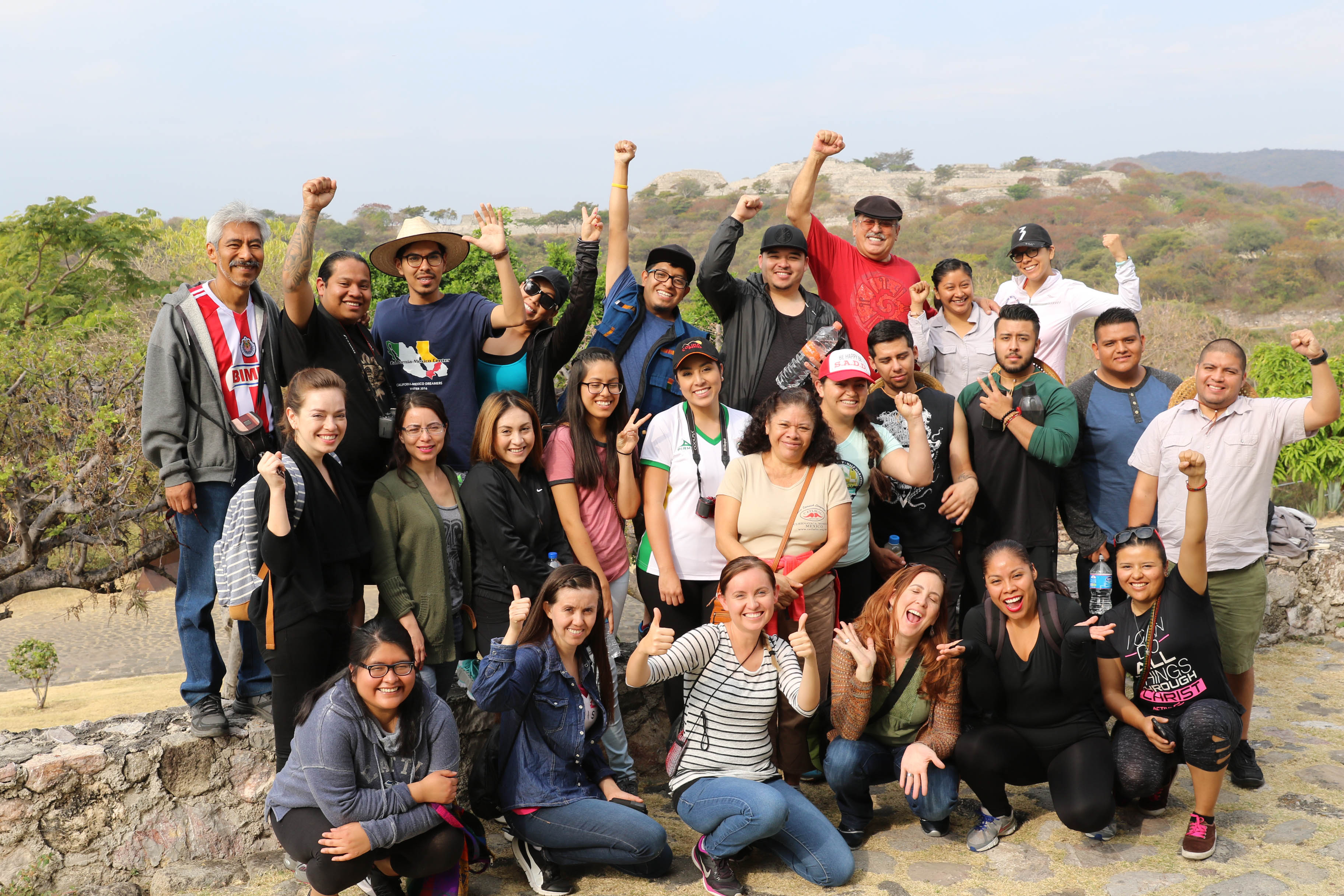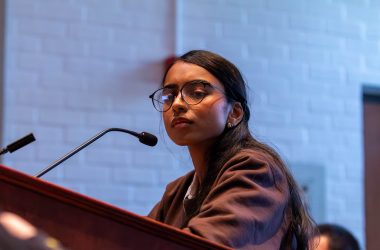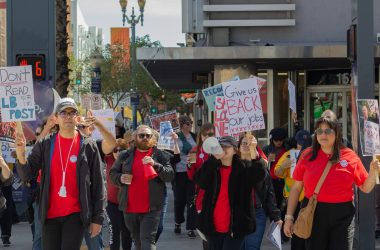Putting aside the fear and threats of deportation, 25 undocumented students from different colleges and California State University campuses took a trip to Mexico on Dec. 22 of last year and returned five days before President Donald Trump took office.
Among the 25 who participated in this last trip were four graduates from Cal State Long Beach: Lidieth Arevalo, Sandra Hernandez, Guadalupe Vazquez and Sheila Salinas.
Students were able to travel abroad to Mexico to reconnect with their roots and understand the relation between the United States and Mexico thanks to the California-Mexico Studies Center, a program that takes DREAMers to Mexico.
DREAMers are immigrants who entered the United States before the age of 16, have lived continuously in the U.S. for five years and have no criminal convictions. In addition, another requirement of DREAMers is that they are currently in school, graduated from high school, earned a General Educational Development or served in the military.
The way in which the California-Mexico Studies Center takes undocumented students abroad is through Advance Parole, a travel document that allows them to temporarily leave the United States for educational, employment or humanitarian processes.
The program, created in 2010 by CSULB Chicano and Latino Studies professor Armando Vazquez-Ramos, has taken approximately 125 DREAMers from various campuses since 2014.
But what made this trip different for these 25 students is the fact that it all took place as the clock was ticking for President Trump to take office.
For Sheila Salinas, a CSULB business administration alumna, the opportunity to visit her home country right before Jan. 20 brought a plethora of emotions.
“There was a lot of uncertainty,” Salinas said and explained that although there was doubt and fear, the fact that the students went as a group and the professor had various connections and support both in the U.S. and Mexico, made her feel safe.
Media coverage of the trip from organizations such as the Associated Press, Telemundo, The Press Telegram, La Opinion and others was available for the public to see, which gave Salinas “a peace of mind.”
“People knew that we were going and if something happened, I feel like there was a lot of support for us,” Salinas said.
Lidieth Arevalo, a CSULB film graduate and executive assistant and multimedia director of the California-Mexico Studies center, said in an interview last year for the California-Mexico Project that when she visited El Salvador with an Advance Parole, officers at the Central American and Mexican borders didn’t seem to be well aware of the travel document.
Similar to Arevalo’s experience, Salinas said that when preparing to board the plane en route to Mexico, students were asked how were they planning on entering back into the United States.
When coming back from Mexico during the layover at the Texas airport, officials unaware of Advance Parole questioned students about not having proof of previous U.S. entry on their passport.
“Grab your luggage and go to the room” is what officials told the 25 students who then had to wait in a separate waiting area for approximately an hour.
“I felt very intimidated and scared at that moment,” Salinas said. “Two or three students felt really anxious … I felt their anxiety.”
Students were not allowed to text, call or use their phone at all while waiting in the room.
Later, students were able to continue their journey back to the United States after Advance Parole paperwork was revised and passports were stamped.
While in Mexico
The California-Mexico Studies Center’s trip abroad consists of one day in Mexico City, 11 days to go visit their family at whichever state they reside and 12 in Cuernavaca, Morelos, where they attend a Spanish-speaking school called Centro Tlahuica de Lenguas e Intercambio Cultural.
Salinas visited her birthplace, Chalco, in the state of Mexico, where she lived for seven years before her parents brought her to U.S.
“All I remembered was a cold, concrete house,” Salinas said about the place where she used to live. “When I went back I was able to see the house where I lived, it seemed like not much had changed. I remember the Popocateptl and ‘la bella durmiente.’”
Popocateptl and Iztaccihuatl, also called “la bella durmiente” (“the sleeping beauty”), are the two volcanoes that overlook the Valley of Mexico.
She also described how in Chalco, floors are all dirt instead of concrete and how kids still play outside in the streets.
“It made me feel sad to see that we live 2017 and in the U.S. we’re very privileged and spoiled,” she said. “We have clean water, we work a lot and have commodities and in Mexico you work a lot, but you don’t have commodities.”
Salinas shared that while in Mexico, protests against high price increases for fuel were happening and she was able to see how people mobilize.
She realized the sacrifice that her parents took by leaving their life behind to migrate to the U.S. and give her and her sisters a better life when she experienced how some people live in Mexico and the difficulty to find stability there.
“There’s a lot of social problems [in Mexico] that we don’t know about in the U.S.,” she said.
While recognizing that the U.S. provides a higher chance of stability, Salinas explained that in the U.S. it is less common to have family time and eat meals together, given the time that one spends at work.
“We live a better life for commodities [in the U.S.], but we don’t see each other, we don’t eat lunch together. [In Mexico] I was eating all my meals with my family,” she said.
During the students’ visit, they were also able to meet the other DREAMers.
These, unlike DREAMers such as Salinas and others who were able to obtain a work permit and driver’s license, left the country before former President Barack Obama announced Deferred Action for Childhood Arrivals.
These other DREAMers left either due to deportation or by willingly following their family’s decision to go back to their home country.
“Hearing their stories of how different it is to readjust [to their home country] really brings us to reality of what’s going to happen if one of our family members gets deported or how’s it going to be if we get deported,” Salinas said.
The Mexico native said that adapting to the country where these undocumented students were born, but not raised, would be very challenging.
“After you’ve been taught that in the U.S. you have dreams and you can reach them … in Mexico you can have dreams, but you can’t attain them,” Salinas said.
President Donald Trump’s Immigration Orders
President Donald Trump has openly spoken about deportation and the possible termination of DACA, thus leaving many DREAMers like Salinas concerned and worried.
“I think he’s going to take DACA away,” Salinas said. “I’m very hopeful that he doesn’t take it away, but I think he is because he’s been doing everything he said he was. I think he’s going to do it, and it’s very unfortunate.”
Trump, however, has also showed sympathy for DREAMers. In a Huffington Post article titled: “Donald Trump Says, Without Specifics, That He Will ‘Work Something Out for Dreamers’” by Elise Foley, the article states that the 45th president of the U.S. acknowledged the struggle that DREAMers go through and said some are “in never-never land because they don’t know what’s going to happen.”
Salinas said that revoking DACA would affect DREAMers’ personal lives as well as the U.S. economy because they have contributed to it.
According to a study by the Center for American Progress, DACA recipients contribute positively to the economy through large purchases like a car or house.
Trump has signed several executive orders regarding immigration and immigrant status, but the future of DACA remains uncertain.
“We want to contribute to the safety of the country,” Salinas said.




